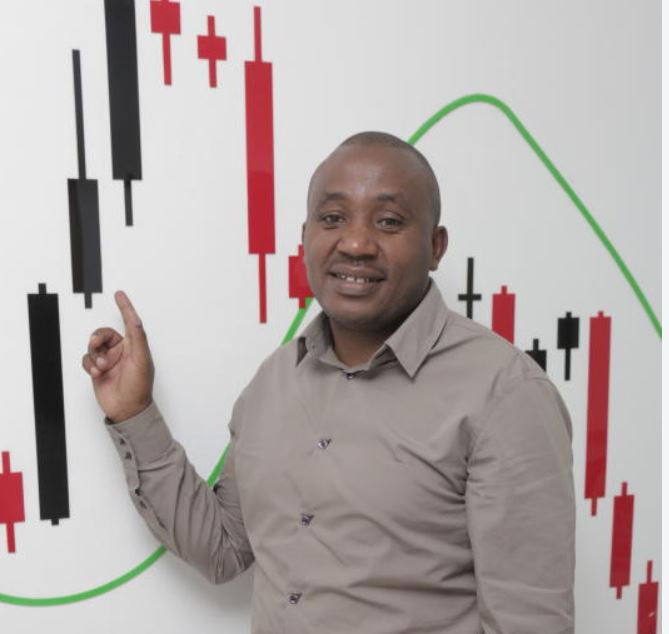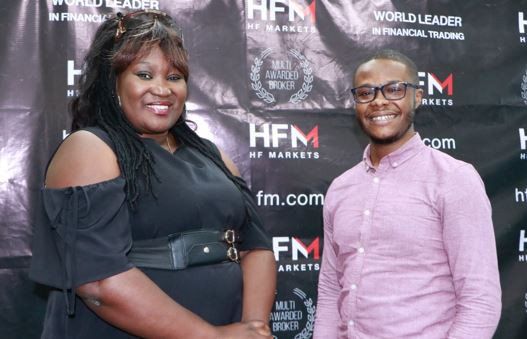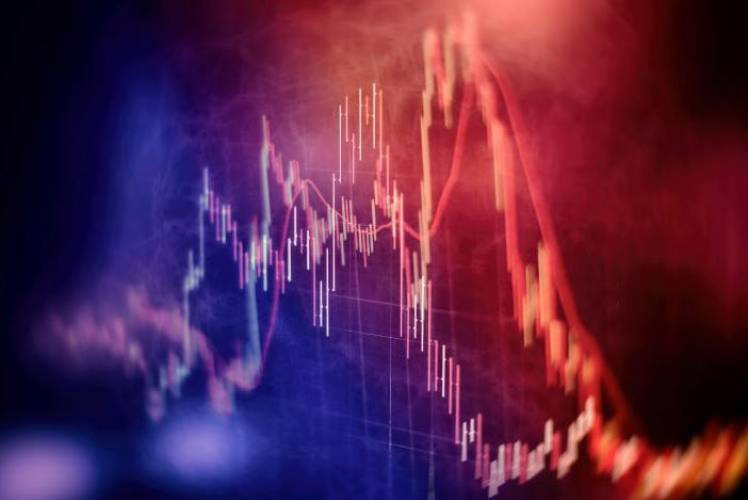
There has been a lot of talk both online and offline about forex trading. While it is great idea to earn some extra cash in these lean times, getting into it can be daunting. Like every other trade, forex trading has its own jargon that you need to understand before putting in your money. To demystify some of them, JACQUELINE MAHUGU spoke to Richard Mutinda (Above), the team leader of the forex and securities curricula and co-author of forex and securities textbooks.
1.Online Forex Trading
Forex is the simultaneous buying of one currency and selling another. It is buying and selling of currencies against each other. It is basically what happens when you decide to go and buy dollars from the bank, keep them in the house and wait for some time for them to appreciate and then selling them at a profit. So instead of doing so, you do that online, in real-time, because now what you are going to be exposed to is the money markets that are not within the confines of this country. You will be taking part in the circulation of $5.4 trillion that circulates in the foreign markets in a day. Trading is done using the major currencies like the US dollar, the Japanese Yen, the Euro and the Sterling Pound.
2. Metatrader 4 (MT4)
In Kenya, we trade on the forex market using the MT4. The software is usually bought by brokerage firms for executing trades, and then they customise the platform as they wish to. The software is just a trading space, the same way businesses rent a space and remit dues to the landlord. As a user, you would download it online for free.
So how do the brokers benefit? When you have a live account, it means that you have an account that has money. You can also have a demo account. The demo account is what you use for practice when starting out to get a feel of how trading works. The money in it is not real, but it is recorded as if it is. When you graduate to a live account, once you wire real money to the MT4 via the commercial banks, the amount that you have reflects on the MT4, which is the trading space, and the broker is able to see, wherever they are, the amount of money that you have. You can wire it mostly in dollars, but you can use the sterling pound and so forth, depending on what you want, as the banks will do it for you. So when you start trading live, any time you log into the system, there is a commission that the brokers get from you from the money that you are trading. In the simplest terms, since it is a trading space, it would be like paying rent for using the space.
When you are trading in the bank, you get to see how much the dollar is trading against the Kenyan shilling, but on the MT4, you get to see exactly how it is moving. The banks and bureaus average the values to where it is mostly, but on the MT4 you get to see the actual real-time values. Sometimes it can rise above what is expected and that is the advantage the MT4 gives.
3. Mutual funds.
This is money pooled together under a manager from many investors who do not have enough money to buy a sum at a particular fee. For example, if you have partners like in a cooperative of welfare society, you pool money together to be able to invest in a business of your choice, since none of you is able to raise the capital required single-handedly. Similarly, in the forex market, you can pool money together in a common pool and you trade it. The benefit of this is that the more money you have on the platform, the better for you. You can compare it to a kiosk versus a supermarket. The turnover will not be the same. In forex trading, there is something referred to as volumes. It is about how much money you want to earn at the end of business that day. So if you use, for instance, 0.1, 0.05 or 1, depending on the amount of money that you have, say $1 million, if you use volume 1, you can speculate how much money you are going to get. However, if you lose, you will also lose by the same margin. Pooling money together makes trading easier.
4. Spread
The spread is the difference between a bid (how much you buy security) and ask (how much you sell it). To illustrate, when you go to the banks, they say that when you buy the dollar, you buy it at Sh103, and selling it at 100. That difference of Sh3 is the spread. The spread is what determines how much profit you make, the same way goods are sold at the market place for in order to make profit.
5. Leverage
This is borrowing money from a broker in order to use a bigger volume to make more money fast with a small account. If you have small amounts of money, you can borrow money from the broker to be able to boost your small account. This is the same way small business enterprises borrow money from commercial banks to boost their businesses. For example, you may open an account with Sh10,000 and you want to make the same amount of money by going directly into the market with Sh10,000 but this is more or less impossible. This is where the broker comes in. He is the middle man between you and the market. The market wants to know if you have enough money, but the market does not check your account directly. It checks your account through the broker. So once the broker gives you that leverage, by boosting your $100 to $10,000, the market sees the $10,000. Through that, you can be able to make more profit.
6. Margin Call.
Stay informed. Subscribe to our newsletter
When you start making losses, the MT4 generates a warning that your account is almost blowing up and that you are not making profits. It is an automatic warning generated by the MT4 due to huge losses. The warning comes so that you are either able to close or do a funding of the system by adding money to it. This usually happens especially when you are new to it and you cannot tell if you are making a loss or the money is getting out of the system to the broker. Because even if you lose money, the broker benefits. When the margin call happens it lights up in the colour pink, and in forex, pink indicates danger, but green is good. The margin call is similar to when, in business, the market price of a commodity or product goes down, hence affecting the capital invested in the business.
7. Stop loss
This is a way of preventing you from losing a lot of money. If you deposit $1000 dollars and you start trading, it is actually possible to lose the whole $1000. To stop that from happening, you can use the stop-loss provision to limit the amount of money you risk losing. When trading, you can risk something like $5. To prevent you from losing more than $5, you use the stop loss. It is an automated command, and you set it at your $5 limit. Once the market moves against you and it gets to that level, that trade closes itself automatically. The opposite of that is the take profits, which automatically collects money from the market. It closes your trade with profits. If you have taken a trade and you want to get out of that money with, say, $20, and probably you will not be able to monitor the market when it gets to the $20 it will automatically close the trade. Either way, you do not need to spend the whole day monitoring the market but you will make profits.
8. Forex regulatory bodies
These are regulatory bodies that govern forex brokers like Capital Markets Authority (CMA) in Kenya and the Financial Conduct Authority (FCA) in the UK for instance. The CMA regulates the operations of the Nairobi Securities Exchange (NSE) and the brokerage funds. Ensure that you use brokers who are regulated by regulatory bodies so that in case of anything you can follow up your money. The advantage of local brokers regulated by CMA is that depositing and withdrawing money is possible through mobile money transfer service. For international brokers you have to use a third party like PayPal. If you do it through the bank, the processing takes five to seven days. The disadvantage of this is the commissions that they take and the time it takes as well.
 The Standard Group Plc is a
multi-media organization with investments in media platforms spanning newspaper
print operations, television, radio broadcasting, digital and online services. The
Standard Group is recognized as a leading multi-media house in Kenya with a key
influence in matters of national and international interest.
The Standard Group Plc is a
multi-media organization with investments in media platforms spanning newspaper
print operations, television, radio broadcasting, digital and online services. The
Standard Group is recognized as a leading multi-media house in Kenya with a key
influence in matters of national and international interest.
 The Standard Group Plc is a
multi-media organization with investments in media platforms spanning newspaper
print operations, television, radio broadcasting, digital and online services. The
Standard Group is recognized as a leading multi-media house in Kenya with a key
influence in matters of national and international interest.
The Standard Group Plc is a
multi-media organization with investments in media platforms spanning newspaper
print operations, television, radio broadcasting, digital and online services. The
Standard Group is recognized as a leading multi-media house in Kenya with a key
influence in matters of national and international interest.








